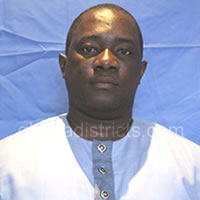VULNERABILITY ANALYSIS
A significant proportion of the people in the District including women, unemployed youth, people with disabilities and the aged are not able to tap their full potentials due to vulnerability and exclusion. Although there are some form of child abuse like child labour in some parts of the District especially in areas where small scale mining is rife.
The cases of child labour have been observed in the areas where parents engage the service of their children to “carry sand with gold deposits” at the mining site either after school or during holidays. Majority of the people practice subsistence farming. They hardly get credit facilities to expand their farms. This situation predisposes them to poverty. As a result they find it difficult to meet their social obligations like payment of taxes and school fees. Poverty is therefore wide spread in the district.
In view of the high illiteracy rate among farmers, agricultural research findings cannot be utilized to their advantage. The ratio of farmers to extension officers is high, therefore rendering farmers inaccessible to extension services.
The district faces a threat of HIV/AIDS infection because of its proximity to Obuasi, an area known to have high prevalence rate of 4.0% as against national prevalence rate of 3.1%. An association of persons living with HIV/AIDS (PLWHAS) known as PRECIOUS LIFE has been formed at Asokwa. It is therefore a manifestation that, some communities like Asokwa and Fumso are threatened with the pandemic. The district could therefore be at risk. The District Assembly would conduct a baseline survey on HIV/AIDS and step up a Behavioural Change Communication (BCC) as a strategy to control the spread of the disease.
Physical developments in the district did not make room for disability issues. Artificial barriers have inadvertently been created in the communities which impede movement of persons with disabilities (PWDS). PWDS are technically prevented from using public facilities like toilets and school buildings. The district will ensure that such artificial barriers are removed to allow easy movement. In line with the Disability Law, the new District Assembly block has the necessary provisions that would facilitate easy movement by PWDS.
Indiscriminate felling of trees for lumber also poses a serious threat to the environment. The District Assembly would form a task force to clamp down chain saw operators in order to prevent further degradation of the environment.
Livelihood Empowerment against Poverty (LEAP)
The Adansi Asokwa District is among the sixty-thousand (60,000) households that have been added to the Livelihood Empowerment against Poverty Programme. It is a social protection programme meant to give a short-term plan for reducing poverty and encourage long-term human capital development. The trial phase started in March 2008 and has gradually expanded since then. As as at December 2017, communities such as Tewobaabi, Old Pipiiso, Adansi Asokwa, Fumso, Aboabo, Brofoyeduru, Nyamebekyere, Denyase, Nyankomasu, Tasilma, Adokwai, Bodwesango, Agyenkwaso, Atetam, Hwiremoase, Adansi Adiembra, New Ayaase, Bobriase, New Akrofuom, Akwanserem, Ayokwa, Sarponso, Sodua, Sackitey, Kyereburoso, Nsokote, Adansi Anomabo, Akrofuom and Appiankwanta had been to benefiting from the Leap programme within the District.
Gender Issues
Hindrance to progress in the fight against gender discrimination include, lack of reliable data disaggregated by sex, the scarcity of financial and technical resources for women’s programmes and lack of representation in the political arena. Gender discrimination in the District will be addressed as stated in the Sustainable Development Goals of ‘Achieving gender equality and empower all women and girls’ (GOAL 5) within the plan period. The District seeks to reduce by 15% disparity in primary and secondary schooling for the girl child.
Programmes such as economic empowerment in agriculture sector through credit facilities for women farmers, sensitization of women on domestic violence bills, disability bills and encouraging the women to accept public office in our local government structures would be pursued. More girl-child enrolment in second cycle and possibly third cycle schools/colleges would be pursued for them to serve as role models.
The Assembly is not doing badly at all on the ratio between boys’ and girls’ enrolment in schools (GPI) from KG-Primary levels in the District. A critical issue which needs attention is the drop-out rate of both boys and girls as they move up the educational ladder from Primary level to Junior High School level. For instance, between the years 2013/2014, percentage of boys and girls moving from Primary to JHS dropped by 44.7% .Again, percentages in 2016/2017 academic year also dropped by 45% when boys and girls were moving from Primary school to JHS. Conscious efforts should be made by the Assembly and other stakeholders to address drop-out rate from primary to JHS in the District.
It is the hope of the Assembly that, government policy of re-defining basic education to include SHS if when implemented could reverse the trend to have a fairly balanced situation where more boys nd girls would move from Primary level-SHS level in their numbers.
GENDER EQUALITY
The issue of gender profiling is very important in the development planning process at the District level. It enables the planning authorities to make conscious efforts to take steps to bridge the gap in societal roles between men and women, boys and girls. It is against this background that the Sekyere Central District Assembly prepared this plan based on the gender profile of the District. This will help the District to formulate and implement programmes to bridge the gender gap.
Gender Profiling
The gender profile of the District covers the areas of Education, Health, Local Governance, and Culture. It relates to how to access and control resources such as land, credit, technology, access to time, markets and information.
Date Created : 2/14/2019 4:59:28 AM





 facebook
facebook twitter
twitter Youtube
Youtube TOLL FREE 0800 430 430
TOLL FREE 0800 430 430 +233 593 831 280
+233 593 831 280 GPS: GE-231-4383
GPS: GE-231-4383 info@ghanadistricts.com
info@ghanadistricts.com Box GP1044, Accra, Ghana
Box GP1044, Accra, Ghana